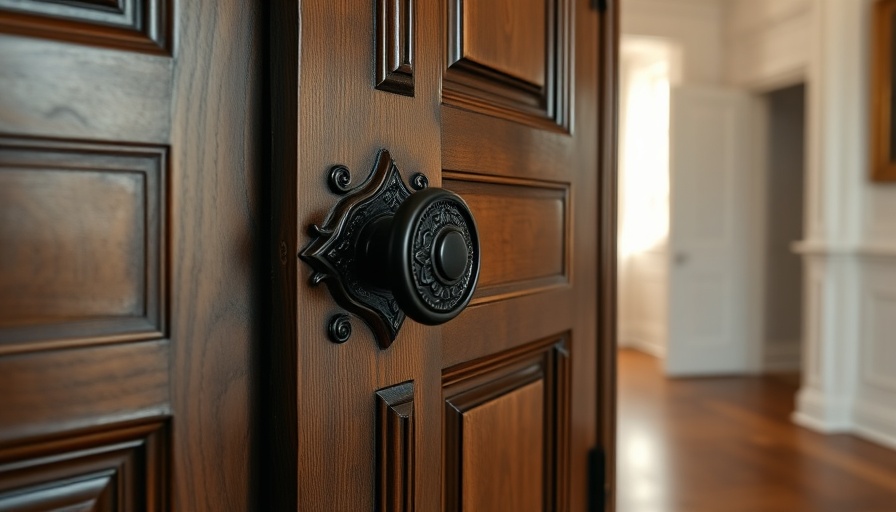
Reviving Charm: The Art of Refinishing Victorian Doors
Victorian doors are not just entrances; they are gateways to history and craftsmanship. While worn down by the sands of time, these doors hold a beauty that can be restored through DIY refinishing. If you are a homeowner looking to enhance your exterior while preserving structural integrity, this guide offers practical steps to breathe new life into your Victorian doors.
Understanding the Value of Your Victorian Doors
Before embarking on your refinishing adventure, it's essential to grasp the historical context of Victorian doors. Typically characterized by intricate designs and sturdy materials, these doors enhance the architectural elegance of many homes. Recognizing their intrinsic value often inspires homeowners to maintain and restore them, prolonging their life rather than replacing them entirely.
Materials Needed for Your Project
A successful refinishing job requires the right tools and materials. Start with a quality paint stripper, sanding paper of varying grits, wood fillers for any imperfections, a new stain for added appeal, and a sealant to protect the finish. By carefully selecting these materials, you'll ensure that the restoration is not only aesthetically pleasing but also durable against the elements.
Step-by-Step Instructions for Refinishing
This process begins with removing the door from its hinges—an often overlooked but crucial step. Once taken down, strip the existing finish with a paint stripper. Use a putty knife to scrape it away gently without damaging the wood underneath. Next, sand the entire door, starting with coarse grit paper and working your way to a fine finish, preparing the wood for staining.
After sanding, inspect for imperfections and use wood filler to address any damage. Let it dry thoroughly, then sand it down until smooth. Now comes the exciting part: choose a stain that complements your home’s exterior and applies it evenly. Finally, once the stain is dry, seal your refinished door with a protective coat to guard against weather and wear.
Considerations for Your Reinvention
In revitalizing your Victorian doors, consider the finish that best suits your home's style. Some homeowners may prefer a classic wood finish that showcases the natural grain, while others might favor a bold color that makes a statement. Additionally, think about the functionality; a well-sealed door will retain its beauty longer and enhance energy efficiency.
Practical Insights for Successful Refinishing
Timing and weather can significantly influence your refinishing project. Optimal conditions involve a dry, mild day. Humidity can slow down drying times and affect the finish quality, while extreme temperatures can cause materials to behave unpredictably. It’s also essential to protect the surrounding area from paint splatters and dust created in the sanding process to keep your workspace tidy.
Rewards Beyond Aesthetic Improvements
Refinishing your Victorian doors extends beyond simply beautifying your home. It’s an opportunity for hobbyists to engage in a rewarding activity, enhancing home value and deepening your connection to the property. Plus, eco-conscious homeowners save waste by restoring rather than replacing valuable materials.
Conclusion
By taking on the DIY refinishing of your Victorian doors, you embrace both craftsmanship and sustainability, enriching your home's exterior while cherishing its history. With the right tools, techniques, and a touch of creativity, you can transform tired doors into stunning focal points that celebrate your home's character and heritage.
 Add Row
Add Row  Add
Add 


 Add Row
Add Row  Add
Add 

Write A Comment